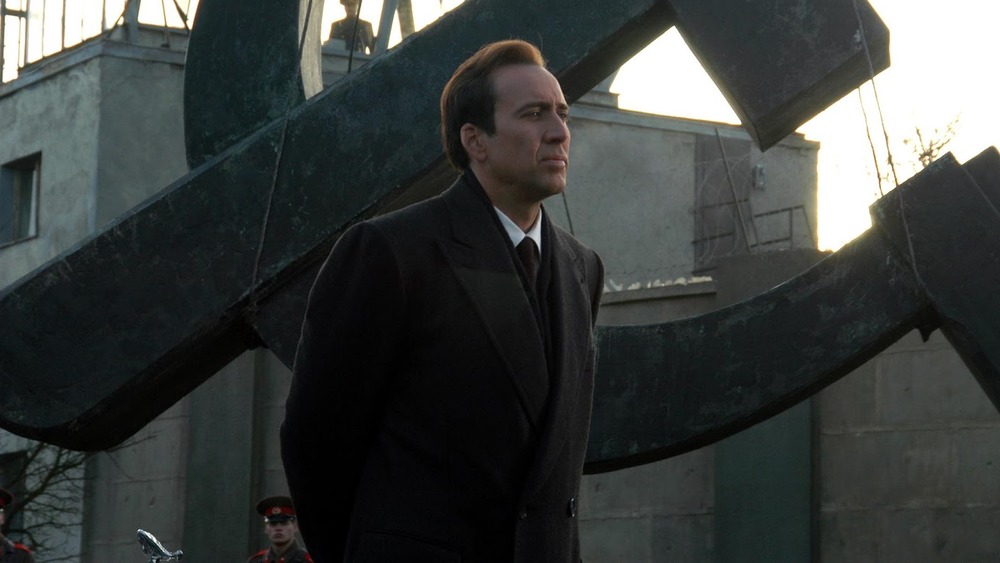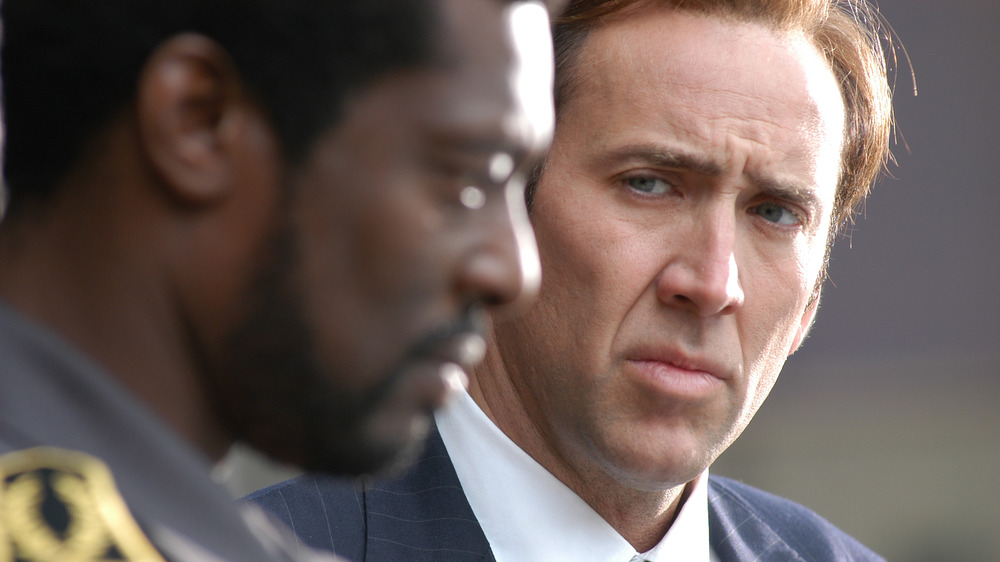Why Nicolas Cage's Lord Of War Used Real Guns Instead Of Props
Let's be clear about one thing: Love him or loathe him, Nicolas Cage hasn't built his career on making realistic films.
While he's wholly believable as a Beatles-obsessed "chemical super-freak" in Michael Bay's 1996 action blockbuster The Rock, the film lacks a bit in accuracy. For starters, VX, while indeed a failed pesticide, is not going to melt your face off or cause you to spasm so hard you break your own spine. The film doesn't even present VX in the proper phase of matter. According to Science Vs. Hollywood, "VX is not a gas, as depicted in the [film], but a thick, heavy oil that is tasteless and odorless, with the consistency of honey."
Let's take another '90s gem from Cage's filmography: Face/Off. Admittedly, this one is a bit of a mixed bag: While the concept of Cage's villainous Castor Troy trading faces with John Travolta's Sean Archer was totally outlandish, it was technically only outlandish at the time. As the BBC reports, the first full facial transplant was successfully performed in Spain in 2010, but let's be honest, the entire point of the film was to be off-the-wall ridiculous.
So why, then, did the filmmakers behind Cage's 2005 movie Lord of War use real guns as props instead of fake ones? The answer may surprise you.
It turns out it was cheaper to use real guns for Lord of War
The decision to use real guns when making Lord of War — which told the tale of fictional arms dealer Yuri Orlov, as portrayed by Cage — had nothing to do with authenticity or realism and everything to do with the biggest factor behind most decisions in Hollywood: money. If you can believe it, it was cheaper to purchase real guns as props than to use fake ones.
As director Andrew Niccol revealed to the New Zealand Herald (via CinemaBlend), it made better fiscal sense to purchase 3,000 guns and sell them back when production ended than to buy up a bunch of prop weapons. "During the making of it, I needed guns in the Czech Republic, and it was cheaper to use real guns than replicas. I bought 3,000 Kalashnikovs and then sold them back at a loss," Niccol said.
The director admitted that prospect didn't exactly make him the best arms dealer, but thankfully that wasn't his aim. In fact, Niccol was bothered both with the ease with which he was able to purchase weapons and the idea of selling weapons back into circulation; as a result, the crew cut a number of them in half in South Africa to prevent exactly that. Mind you, his qualms didn't stop him from renting some armored vehicles for the film — yes, renting.
"We also got some tanks, and the guy said, 'I need them back by December because I'm selling them to Libya,'" Niccol admitted.
Well, we guess accidental realism is better than no realism at all.

